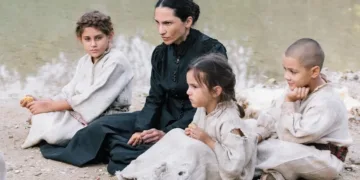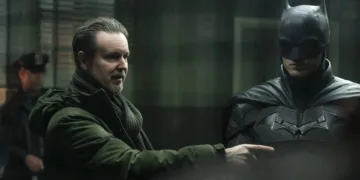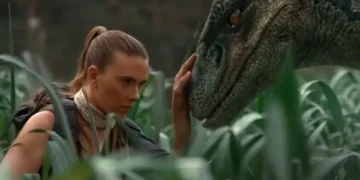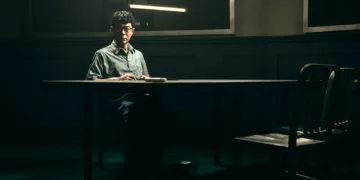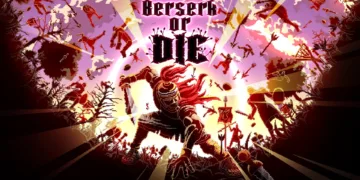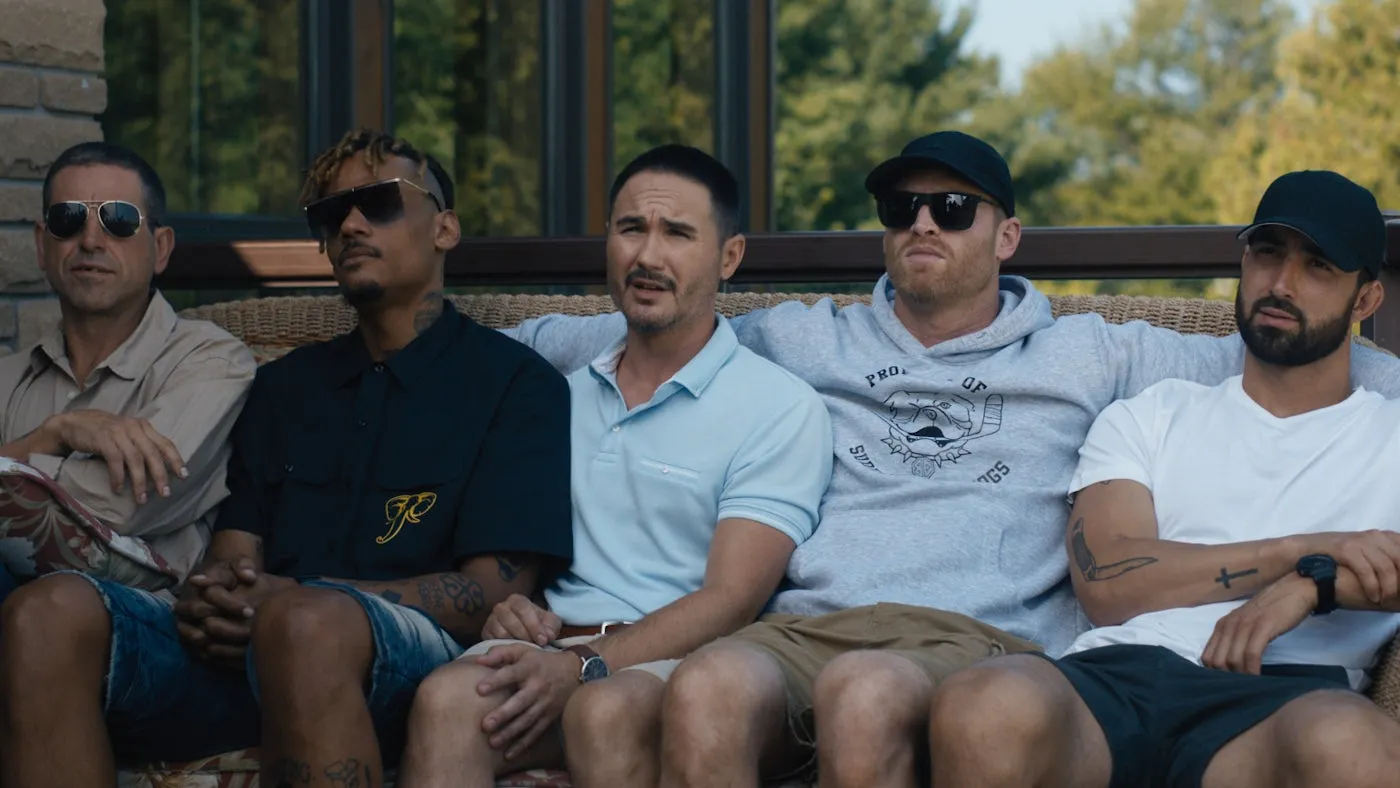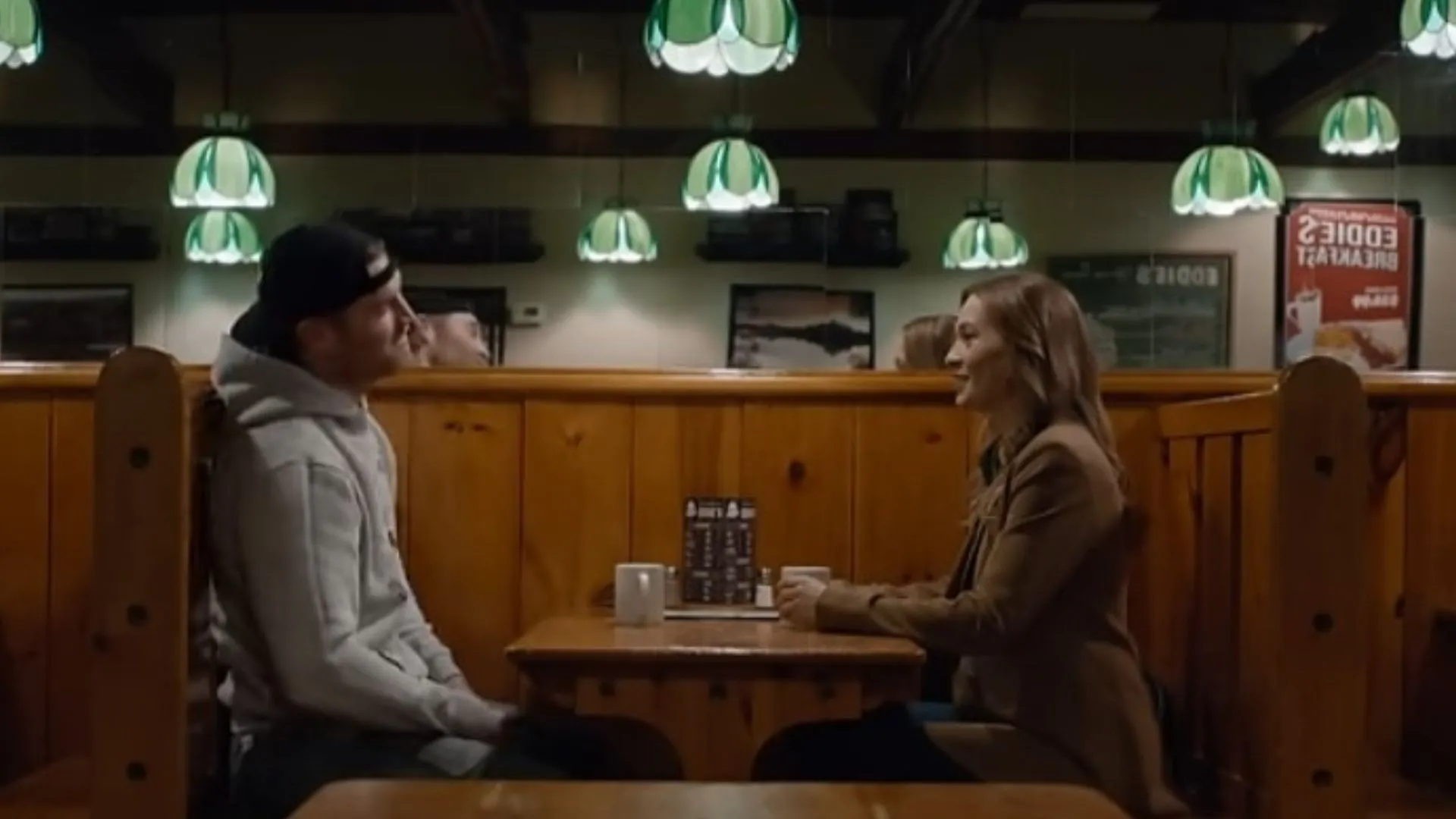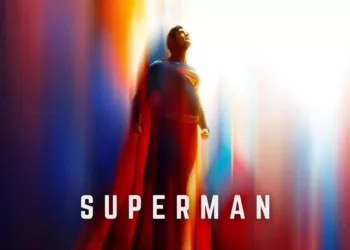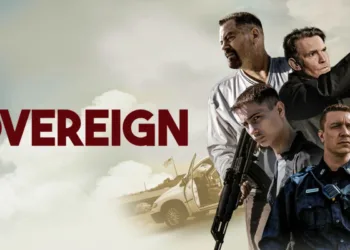Shoresy finds its starting point in the familiar universe of Letterkenny, repurposing its sharp humor and character dynamics while setting its stage in Sudbury, a town steeped in its own local lore.
This series, emerging as a spin-off, adopts a distinctive stance by centering on a character who remains both a product of his roots and a figure navigating unfamiliar terrain. The narrative introduces Shoresy as a stalwart of hockey culture, embodying the spirit of the sport amid the rugged charm of a small Canadian community.
His personality, both brash and earnest, speaks to a long-standing tradition in local storytelling that values a no-nonsense approach to life and sport.
Season 4 marks a turning point where Shoresy confronts life beyond the rink. The series shifts focus from game-day heroics to the challenges of redefining personal purpose following a celebrated athletic career.
This segment introduces a conflict between the pride of sporting achievements and the quest for self-reinvention away from the glare of the ice.
The storyline presents a scenario in which a man, revered for his on-ice prowess, must contend with the transformation of identity that accompanies leaving behind a familiar way of life. Such a narrative invites reflections on how cultural settings shape individual growth and the meaning of legacy in a rapidly changing world.
Narrative Structure and Transformational Moments
Shoresy presents a storyline where the excitement of a national championship acts as a catalyst for the unfolding events. The series begins with a celebratory display of triumph, marked by the Bulldogs’ victory, which serves as an energetic starting point for the season.
The championship festivities set a tone that is both celebratory and reflective, establishing a link between sportsmanship and the communal spirit of Sudbury. This festive episode is interspersed with scenes of local revelry, notably the organized “Weird Sudbury” party, where characters come together in an atmosphere charged with local flavor.
In this setting, the series introduces new duties for its protagonists. Responsibilities such as coaching and engaging in educational programs for youth are woven into the fabric of the narrative. These events are not merely background; they shape the characters’ interactions and hint at the personal costs of a life defined by athletic excellence.
Beyond the main festivities, the series explores a layered storyline focused on the transformation of its central figure, Shoresy. As he steps away from the ice, his evolution is presented through a series of subplots that reflect both professional reinvention and personal exploration.
The integration of media ventures, including a chat show segment and web series contributions, provides a platform where the character faces unexpected challenges. These segments present a blend of high-energy banter with moments of thoughtful self-examination, marking the tension between public persona and private vulnerability.
Moments of personal decision are interwoven with public displays of revelry, emphasizing a shift in identity that comes with stepping out of a long-held role.
The narrative carefully balances scenes of collective celebration with individual introspection, presenting situations where the spirit of competition meets the uncertainty of change.
In doing so, the work invites consideration of how a celebrated sports figure adjusts to a new phase of existence, all while being surrounded by familiar cultural icons and settings.
This structure reflects a complex layering of experiences that question what it means to redefine oneself after a career built on physical prowess and communal validation.
Character Evolution and Team Synergy
Shoresy’s transformation is marked by a shift in both physical presence and internal outlook. Initially seen as the archetypal hockey enforcer, his portrayal expands to reveal a thoughtful individual confronting personal limitations and aspirations.
In earlier portrayals, his rugged demeanor and swift retorts defined his character. In this season, a noticeable change appears through subtle modifications in appearance—a refreshed wardrobe, a new style that hints at maturity—and through a gradual softening of his once unyielding attitude.
His dialogue carries an added weight, suggesting internal conflicts between a past defined by fierce competition and a present where reflection and change have taken root.
This character progression speaks to regional storytelling traditions where personal reinvention resonates with local audiences facing economic and cultural shifts.
Shoresy’s struggle to reconcile his celebrated career with the uncertainty of life off the ice mirrors a common narrative in various national cinemas that depict aging sports figures coming to terms with changing societal roles.
The supporting cast contributes significantly to the narrative’s complexity. Figures such as Nat, Ziigwan, and Miigwan emerge as more than mere sidekicks; they serve as mirrors reflecting and challenging Shoresy’s evolving identity.
Nat, positioned as a guiding force, exhibits pragmatism while handling the administrative aspects of team management, indicating an adherence to time-honored community practices.
Ziigwan and Miigwan, whose interactions provide moments of levity, also represent the collective spirit of a close-knit group facing modern pressures.
Their exchanges add depth to the portrayal of local camaraderie that aligns with the traditions of regional sports clubs worldwide. Additionally, the subplot involving the growing rapport between Shoresy and Laura Mohr introduces a dynamic that influences his outlook.
This budding relationship offers insights into the softer side of a character known for his rough edges, suggesting that personal connections can spur emotional transformation.
The interplay between individual evolution and group cohesion illustrates how team dynamics serve as a catalyst for change.
Their collective experiences, whether through shared celebrations or public challenges, act as a lens for observing shifts in social values and personal identity within a familiar cultural framework, inviting reflection on the interplay of individual ambition and community support.
Cultural Currents and Shifting Identities
Shoresy raises questions about self-definition following a celebrated career in sports. The series presents a character whose identity, long intertwined with the thrill of the game, faces a profound test as the ice fades into the background.
The emotional landscape of leaving a life on the rink is portrayed through intimate moments where personal loss and rediscovery are front and center. This narrative invites comparisons with international portrayals of athletes in transition, offering viewers a rich layer of personal conflict and evolution that resonates on a global scale.
The depiction of masculine ideals in Shoresy reflects a tension between established notions of rugged masculinity and emerging perspectives that challenge old stereotypes.
Veteran players, steeped in traditions of physicality and stoic resilience, encounter younger talents who bring fresh attitudes and new styles of interaction.
The interactions among teammates expose cracks in a once-unified image of toughness, suggesting a reinterpretation of what it means to be a man in modern sports culture. This shift mirrors debates in various international sports narratives, where the legacy of past glories contends with evolving social expectations.
Hockey is portrayed not merely as a sport, but as a lifestyle embedded in the heart of a community. The series captures the essence of Canadian local pride, where hockey courts and community gatherings serve as symbols of cultural identity.
Scenes of local celebration and collective memory highlight a deep-seated respect for traditions even as characters face transformative moments in their personal lives.
Through these portrayals, Shoresy invites reflection on how regional customs and societal values shape personal destiny, while simultaneously opening a window to a wider world of competing ideals and narratives.
Linguistic Liveliness and Emotional Layers
The dialogue in Shoresy pulses with a brisk energy, where rapid-fire exchanges and unexpected turns of phrase offer a sharp, witty experience.
Characters deliver lines with a precision that mirrors the rhythmic pace of a well-coordinated game, their banter peppered with clever quips, playful wordplay, and creative put-downs. This style mirrors techniques seen in international storytelling, where humor functions as a means to bridge cultural differences and speak to a wide audience.
The inventive use of language serves not only as a source of amusement but also as a mechanism to disguise the profound shifts occurring within the characters.
While the surface offers humorous exchanges and visual gags, the underlying dialogue hints at the emotional shifts and internal conflicts of a life transformed. Moments of exaggerated physical comedy and quick-witted repartee contrast with subtle, more introspective remarks that suggest personal uncertainty and change.
This tension between lighthearted jest and quieter, meaningful pauses enriches the series, allowing it to communicate themes of personal evolution and societal change. Through its carefully structured verbal interplay, the series presents a multifaceted narrative that invites viewers to consider the interplay between outward bravado and inner reflection.
Visual Storytelling and Kinetic Energy
The series employs Sudbury’s local scenery as a character in its own right. Shots of familiar landmarks and rustic landscapes provide a sense of place that informs the viewer of the community’s unique character.
The camera often lingers on areas where everyday life and hockey culture intersect, from well-worn arenas to celebratory outdoor scenes. This visual approach establishes an authentic backdrop that connects regional history with modern narratives.
The choice of lighting and framing creates an atmosphere that reflects both the intensity of competition on the ice and the relaxed cadence of off-ice gatherings, highlighting the interplay between sport and community celebration.
Quick cuts and energetic editing patterns mirror the pace of a high-stakes game, with visual gags punctuating moments of witty dialogue.
The series utilizes rhythmic editing to emphasize punchlines and dramatic pauses, lending a dynamic feel that mirrors live-action sports broadcasts.
Music and sound effects play a significant role, their rhythms matching the cadence of both physical confrontations and playful banter.
Shifts between scenes are handled with a sense of precision, ensuring that transitions contribute to the overall tempo of the storytelling.
This meticulous coordination of sound and image invites a comparison with techniques found in international sports films, highlighting a fusion of local aesthetic choices with widely recognized visual storytelling traditions.
Outlook and Emerging Horizons
Season 4 introduces notable shifts in character portrayal, marking a move from a celebrated sports figure toward a more reflective individual.
The narrative presents scenes of local celebration alongside moments where personal reconfigurations take center stage.
The depiction of a familiar athletic life facing uncertainty invites a reexamination of personal identity and the weight of communal legacy in a society steeped in sports traditions.
Speculation points to a continued exploration of the central character’s evolving nature, as upcoming episodes may further explore how personal transformation interacts with the enduring spirit of a tight-knit community.
The series appears set to extend its focus on themes of personal reinvention and cultural continuity, prompting viewers to consider the unfolding impact on sports portrayal and personal destiny in a changing world.
The Review
Shoresy Season 4
Shoresy Season 4 presents a refreshing and layered portrayal of a sports figure entering a new phase. The series skillfully blends humor, local authenticity, and thoughtful storytelling to examine themes of identity and transformation. Its depiction of evolving masculine ideals and community ties is striking, while inventive dialogue and visual style add distinctive flair.
PROS
- Strong character progression and emotional depth
- Clever, fast-paced dialogue with inventive humor
- Authentic portrayal of regional culture and community
- Bold narrative shifts that explore personal transformation
CONS
- Brief episodes may feel condensed
- Inconsistent pacing in some narrative subplots













